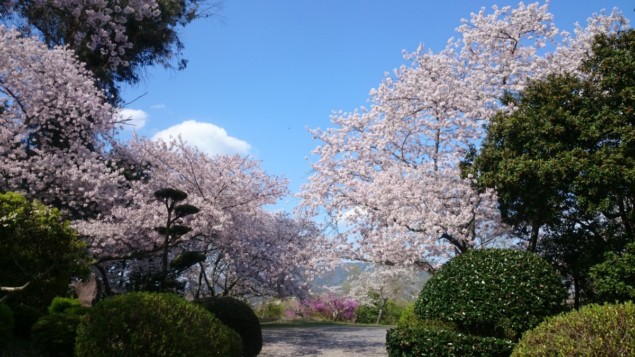
Around the world from Kyoto to Washington DC, people enjoy the blossoming of cherry trees as a rite of spring. In some places – notably Japan and South Korea – blossom festivals are vital for local economies, so it is important that organizers get their timings right.
There has always been some year-to-year variation as to when peak blossoming occurs, but in 2021 it happened in Kyoto on 26 March 2021 – the earliest it has ever been since records began over 1200 years ago. More generally, the date of full blossoming has move steadily forward from mid to early April since the 1800s.
Scientists believe that this shift is caused by a combination of global warming and urbanization – the latter placing the trees in an urban heat island.
State-of-the-art climate models
Now, Yasuyuki Aono of Osaka Metropolitan University has joined forces with Nikolaos Christidis and Peter Stott of the UK’s Met Office to work out how global warming will affect the timing of future blossom events. Using historical data and 14 state-of-the-art climate models, the team calculated how blossoming times will change under various global-warming scenarios.
Under a medium greenhouse-gas emissions scenario, the trio reckon that full blossoming will be pushed ahead by nearly a week by the end of the century. That is on top of an 11 day shift forward that has already happened since the 1800s.
They also conclude that very early blossoming events like 2021 are 15 times more likely to happen now because of global warming and urbanization. Furthermore, they say that such events could become commonplace by 2100, happening once every few years. So, useful information for the long-term planning of blossom festivals.
The research is described in Environmental Research Letters.
Satisfying sizzle
When cooking, there is nothing as satisfying as the sizzle of food when it hits hot oil in a frying pan. But how do you know when the oil is hot enough to add your ingredients? In parts of Asia, cooks will put moist bamboo chopsticks into their pans and judge the temperature by watching the bubbles that form and listening to the sizzling sound they emit.
Now, an international team of scientists has looked at the physics underlying this clever test. “Many cookbooks teach this technique and it is widely used, but when we searched the academic literature, we couldn’t find any detailed scientific explanations,” says Zhao Pan of Canada’s University of Waterloo.
The team placed wet paper, moistened chopsticks and water droplets in hot oil and observed what happened using sensitive microphones and high-speed cameras. “We found three distinct types of bubble events in our experiments: an explosion cavity, an elongated cavity and an oscillating cavity,” explains Tadd Truscott at King Abdullah University of Science and Technology in Saudi Arabia.
Explosion cavities form when a water droplet enters hot oil and is vaporized to form a bubble that ruptures the surface of the oil. This is unlike elongated cavities, which explode without rupturing the surface. Oscillating cavities occur when a water droplet undergoes a multi-step explosion process and begins to oscillate before breaking up into numerous small bubbles.
The team found that these bubble events occur at oil temperatures that are favourable for cooking, explaining the chopstick test. Indeed, Pan says that the test can get the temperature right to within 5–10%.
The research is described in Physics of Fluids.
